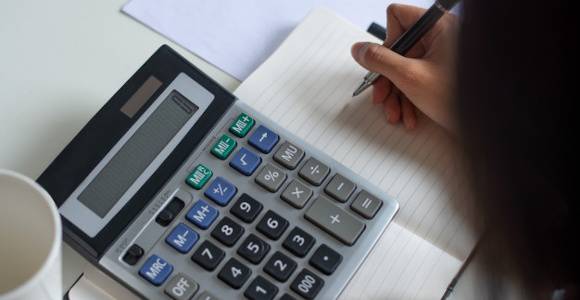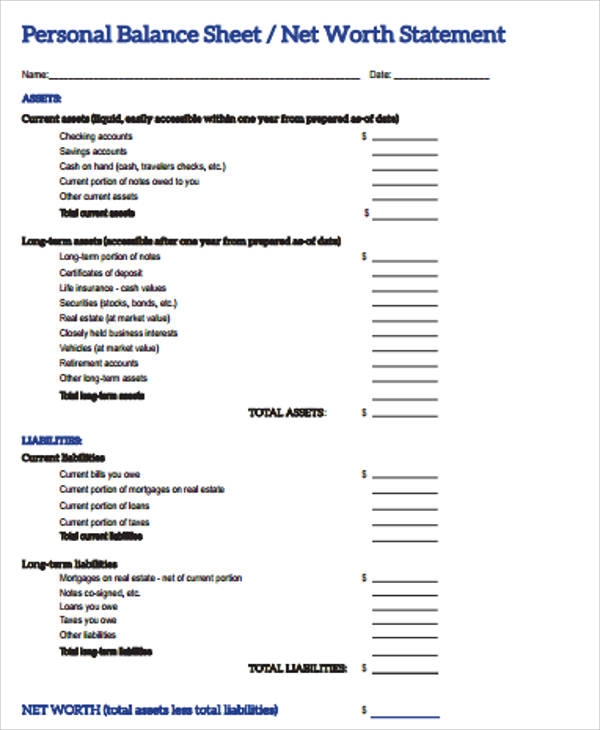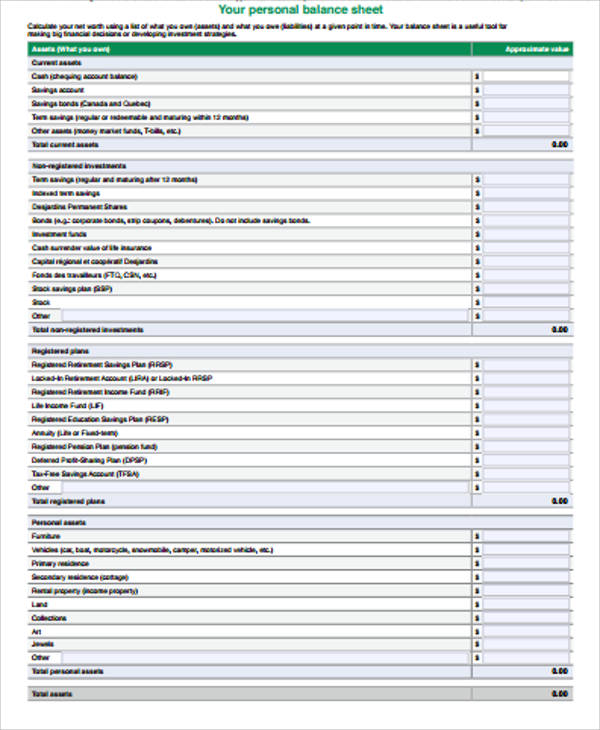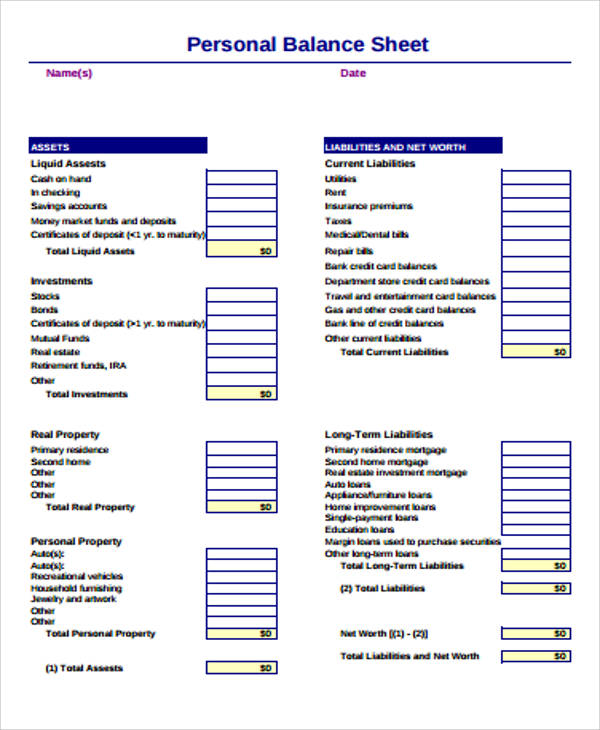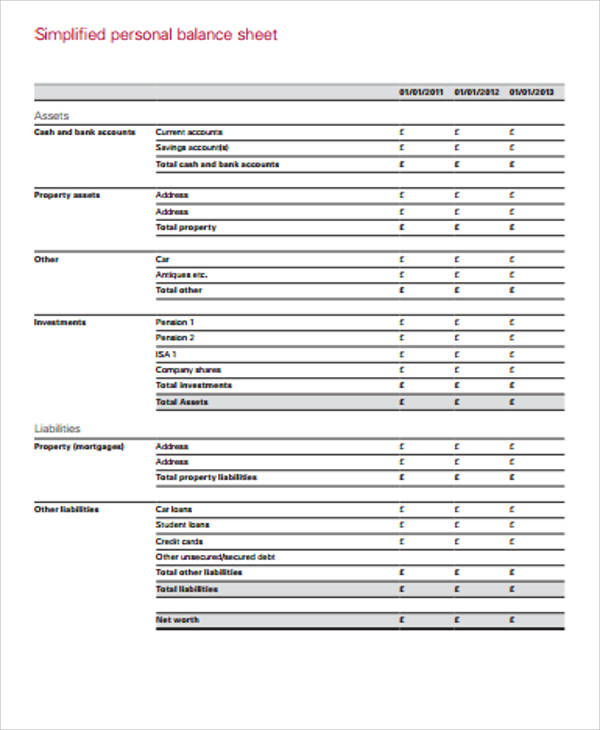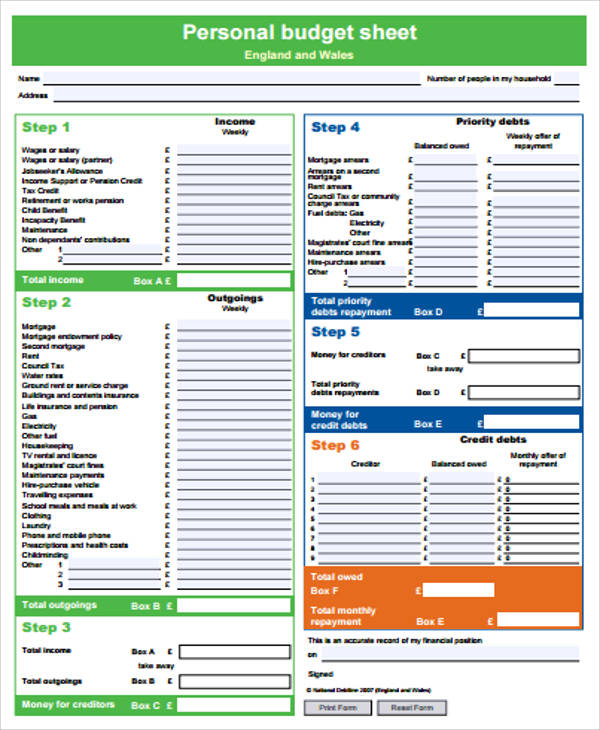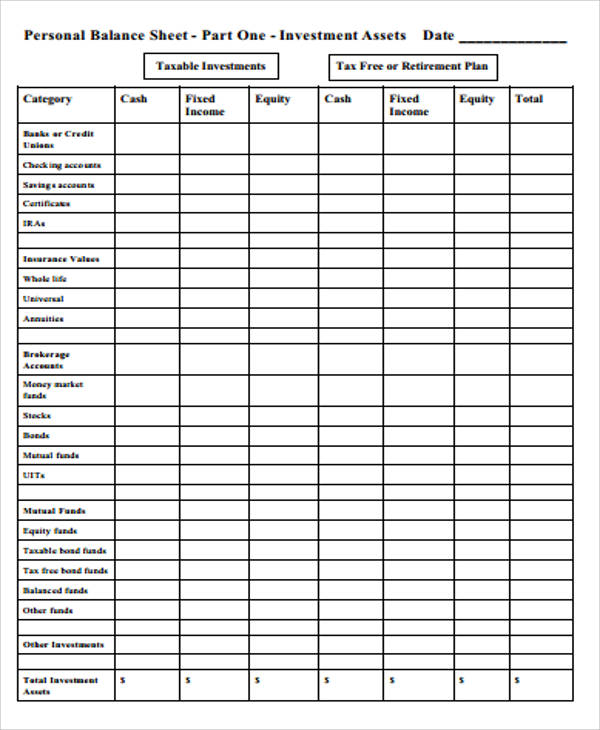You may or may not think about what the future holds, but you cannot simply deny that looking after your finances, no matter how difficult and tedious it may seem, is highly important and essential even if you have or have not something to look forward to. According to Investopedia, a personal balance sheet is a summary of your overall wealth at a given or limited period in time.
Your Personal Budget Spreadsheets would consist of your assets (what you have), liabilities (what you don’t have or owe), and your net worth (assets minus liabilities) to come up with your personal balance sheet.
Personal Balance Sheet Template
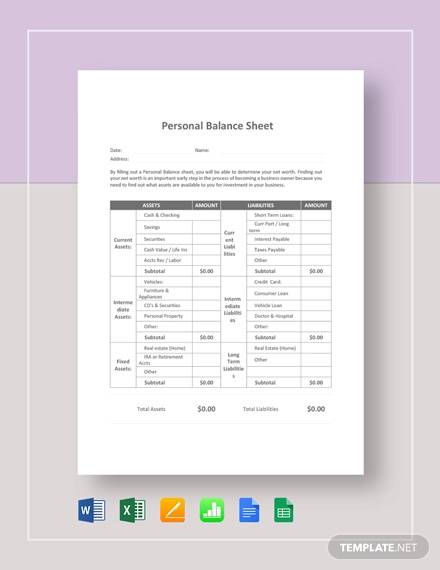
Sample Personal Balance Sheet
Personal Balance Sheet Example
Simple Personal Balance Sheet
Simplified Personal Balance Sheet
Now, if you are still confused on how to classify the three major factors that your personal balance sheet consist, this page will break it down to you in details and you can also check out this page’s Budget Worksheets in PDF that you can use as a resource and download it for free.
Three Types of Assets
- Investments – these are your stocks, certificate of deposit, mutual funds, gold, silver, bonds, exchange traded funds, securities, hedge funds, and whatever form of anything, particularly investments, that adds cash flow or money into your pocket.
- Large Assets – this includes your artwork (art pieces that has market value), boats, cars, furniture, houses, and such. When including this type of asset in your personal balance sheet, refer to the current market value when adding these to avoid miscalculation.
- Liquid Assets – this type of asset consist of cash, saving accounts or money from your bank account, checking accounts, and the like. According to Investopedia, this type of asset are the things you own that can be easily turned into or transacted into cash without losing any monetary value whatsoever.
Your Personal Liabilities
And when it comes to liabilities, those are simply the things that you owe or the things that are costing you money. It is also known as expenses; however, it goes a longer way than that. Examples of liabilities are your bills, loans or debts, mortgage, credit card balances, your daily consumption, and the like.
Personal Budget Balance Sheet
Personal Balance Sheet Form
Printable Personal Balance Sheet
Personal Balance Sheet Sample in PDF
Ways to Increase Your Net Worth
To come up with your net worth, you should subtract your total liabilities from your total assets. Now, this figure is the representation of what you own ultimately since your total liabilities have already been subtracted from your total assets. For example, if subtracting your total liabilities from your total assets gives you a negative net worth, it means that how much you owe is larger or bigger than how much you own. If you are unsatisfied looking at your Accounting Balance Sheets, you can increase your net worth by doing the following:
- Maximizing or adding an additional income – this would include investing more into the stock market, investing into mutual funds, selling something that you can buy for less, or basically just acquire those things that can be found in your asset’s list.
- Minimizing your expenses – this is one way to increase your net worth. Minimizing your net worth would simply mean cutting off your expenses, saving for the rainy days, being frugal and practical, and it also means thinking about the long term, prioritizing and buying only what you need instead of what you wanted.
- Avoid having debts – avoiding debts may not be easy for most people, but it sure pays for some. It also goes with the bottom line of buying and prioritizing on what you need instead of buying things that you want, which you do not need at all.
Related Posts
FREE 12+ Balance Sheet Formats in MS Word | PDF | Excel
FREE 5+ Construction Bid Sheet Samples in PDF | MS Word | Excel
FREE 15+ Construction Timesheet Samples in PDF | MS Word
FREE 26+ Construction Sheet Samples in MS Word | Google Docs | Excel
FREE 20+ Continuation Sheet Samples in PDF | MS Word
FREE 25+ Program Sheet Samples in MS Word | Google Docs | Pages | PDF
FREE 33+ Student Sheet Samples in PDF | MS Word
FREE 32+ Planning Sheet Samples in PDF | MS Word
FREE 10+ OC Sheet Samples in PDF
FREE 10+ Beat Sheet Samples in PDF
FREE 3+ Paper Sign Up Sheet Samples in PDF
FREE 50+ Summary Sheet Samples in MS Word | Google Docs | Google Sheets | Excel | PDF
FREE 10+ Cleaning Bid Sheet Samples [ Commercial, House, Residential ]
FREE 10+ Group Sheet Samples in PDF
FREE 10+ Family Group Sheet Samples in PDF
